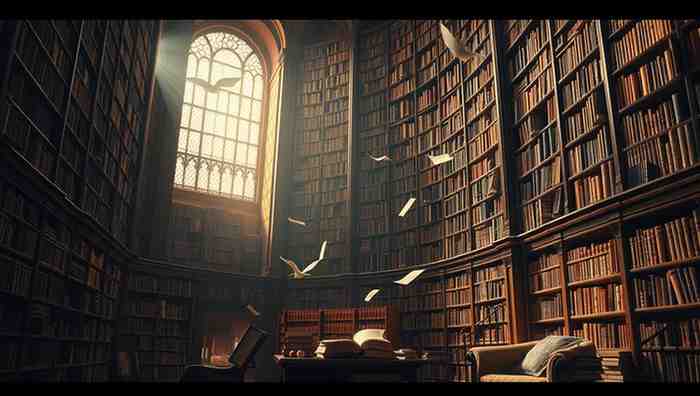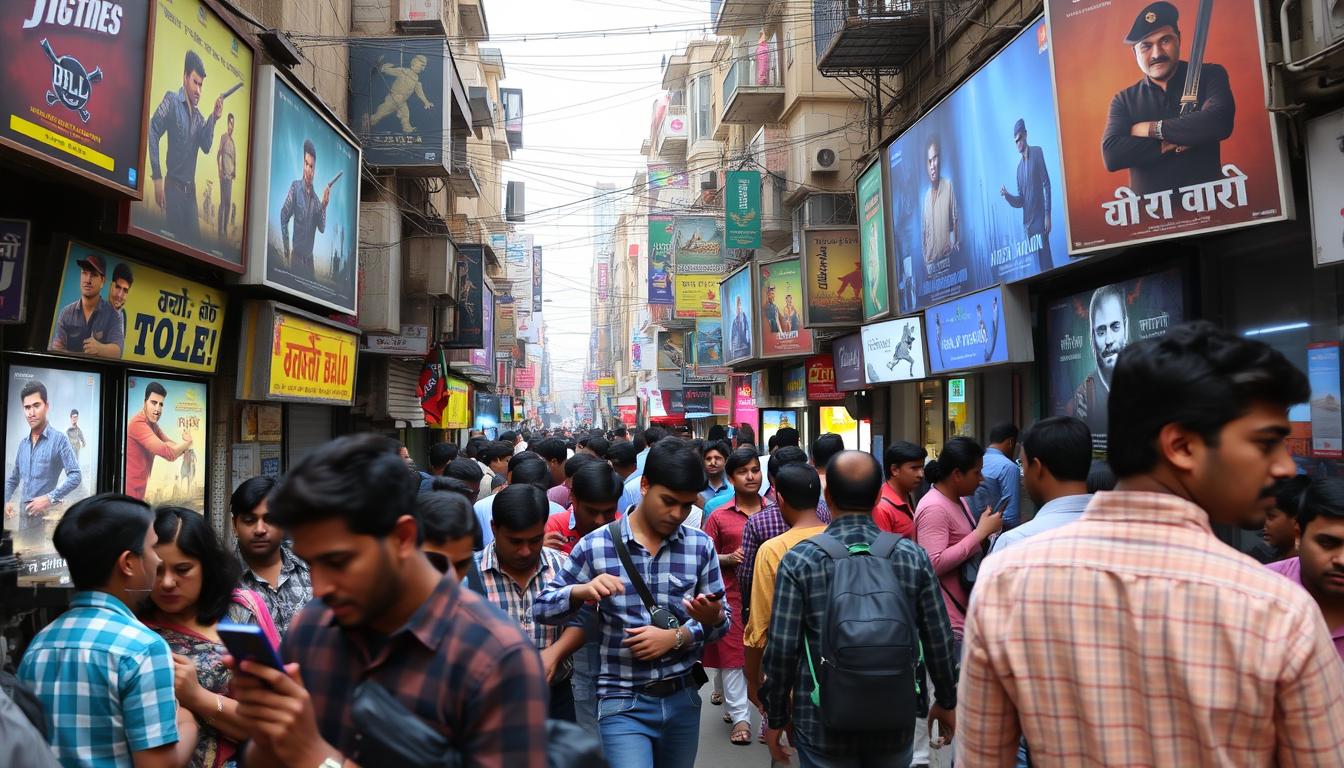What movies do you consider to be examples of masterful story telling

What movies do you consider to be examples of masterful story telling
Cinematic stories can grab our attention and stay with us long after the credits roll. Masterful storytelling is key to this magic. It involves techniques like character development and plot structure, making a film unforgettable. This art form needs a deep grasp of film techniques and the skill to tell stories that touch our hearts.
Masterful storytelling in movies does more than entertain. It connects with us, stirring emotions, sparking creativity, and broadening our views. By diving into the elements of masterful storytelling, we can understand what makes a film a true masterpiece.
Key Takeaways
- Masterful story telling is essential for creating memorable cinematic narratives
- Film techniques, such as character development and plot structure, are crucial elements of cinematic narratives
- Cinematic narratives have the power to evoke emotions and spark imagination
- Masterful story telling in cinema requires a deep understanding of film techniques and the ability to craft compelling stories
- Cinematic narratives can challenge our perspectives and create a lasting impact on audiences
The Art of Masterful Story Telling in Cinema
Cinematic stories can captivate and inspire us deeply. They leave a lasting mark on our feelings and thoughts. The art of storytelling in movies is complex, using many elements and techniques. As technology grows, so does the way we tell stories on screen.
How we tell stories in movies has changed a lot. This is due to new tech and what people want to see. Now, we see stories told in new ways, like non-linear plots and amazing visuals. These changes make movies more engaging and immersive, pulling us into the story.
Great stories can make us feel deeply and connect with us on a personal level. Filmmakers use camera angles, lighting, and sound to tell their stories. This way, they create a narrative that touches us deeply. Many films become part of our culture, inspiring new stories and fans.
Defining Excellence in Cinematic Narratives
What makes a movie story great is balancing different parts. This includes characters, plot, and how fast the story moves. When filmmakers get this right, they make a story that grabs and moves us, leaving a lasting mark.
The Impact of Great Storytelling on Audience Experience
The effect of great stories on us is complex. It involves our emotions, thoughts, and how we connect with others. By telling stories that touch us, filmmakers create a deep bond. This bond inspires us to think about our own lives and feelings.
The Evolution of Film Narrative Techniques
How we tell stories in movies has changed a lot. This is due to new tech, culture, and art. Filmmakers keep exploring new ways to tell stories, making movies more exciting and inspiring for us.
Essential Elements of Compelling Film Narratives
Film scholars and critics agree on key elements for great film stories. These include character development, plot structure, and pacing. These elements keep the audience hooked. Well-rounded characters help us connect with them deeply.
A good plot structure is also key. It gives the story a clear start, middle, and end. Pacing is important too. It controls how fast the story moves, keeping us interested.
Themes and motifs add depth to a film’s story. They give the audience more to think about. By using these elements, filmmakers craft stories that stick with us long after the movie ends.
| Storytelling Elements | Importance |
|---|---|
| Character Development | Creates well-rounded characters |
| Plot Structure | Provides framework for the story |
| Pacing | Determines the speed of the story |
By combining these elements, filmmakers make engaging stories. Character development, plot structure, and pacing, along with themes and motifs, form a strong story. This story will leave a lasting impression on the audience.
Landmark Films That Revolutionized Storytelling
Cinema has a rich history of films that changed storytelling. These films brought new techniques and stories that inspire today’s filmmakers. They pushed the limits of what movies can do and how they tell stories.
Classic films like “Citizen Kane” and “2001: A Space Odyssey” are big influences. They introduced new ways of making movies and telling stories. Their impact can still be seen in movies today, inspiring many with their unique styles and stories.
Classic Cinema Masterpieces
Films like “The Godfather” are known for their great stories. They teach us about characters, plots, and movie-making. These films are still loved today for their lasting stories and characters.
Modern Storytelling Innovations
Recently, films have kept pushing storytelling forward. They’ve brought new ideas and stories that have changed the film world. These innovations show how movies can reflect our changing world and values, offering new views on life.
Genre-Defining Narratives
Landmark films have also shaped movie genres. They’ve created new types of movies that are now common. From sci-fi to rom-coms, these films have helped filmmakers explore complex ideas in exciting ways.
Character Development and Arc Mastery
Good character development is key in storytelling. It helps audiences connect with characters and care about their stories. This is especially true in the hero’s journey, where the main character’s growth moves the story along. Well-made characters make the story better.
Character development is linked to the hero’s journey in films. This journey is a core part of stories. It follows the hero as they face challenges and grow.
The Importance of Supporting Characters
Supporting characters are crucial in stories. They add contrast, conflict, and depth. They also help the hero on their journey, offering help or obstacles. This makes the story richer and more engaging.
Character Arcs and Narrative Depth
Character arcs add depth to a story. They show how a character changes over time. This can happen through the hero’s journey, character growth, and facing challenges. Good character arcs make stories memorable and impactful.
| Character Development Techniques | Description |
|---|---|
| Backstory | Provides a character’s history and motivations to enhance their development |
| Dialogue | Uses conversations and interactions to reveal character traits and relationships |
| Subtext | Conveys underlying emotions and intentions through actions and expressions |
Visual Storytelling Techniques in Contemporary Cinema
Visual storytelling is a big part of today’s movies. It lets filmmakers share complex ideas and feelings through pictures and scenes. They use camera angles, lighting, and how things are set up to make stories that grab our attention.
Color schemes and how sets are designed also matter a lot. They help set the mood and feel of a movie. This makes the story more real and engaging.
Visual storytelling deeply affects how we feel about a movie. It can make us feel emotions, add excitement, and share important messages. Directors like Martin Scorsese and Quentin Tarantino are experts at this. They use their skills to make movies that we remember for a long time.
With new tech, the ways we can tell stories in movies are growing. Now, we can see movies in 3D and even experience them in virtual reality. This opens up new ways to take us into different worlds. It’s exciting to think about what new stories will be told in the future.
The Role of Dialogue and Sound in Narrative Construction
Dialogue and sound are key in building a story. They help create tension, share themes, and introduce conflict. Good dialogue shows a character’s personality and can build suspense. It uses subtext and dramatic irony to engage the audience.
Sound design and music also add to the emotional impact. Musical themes, or leitmotifs, link to characters or ideas. Sound effects, like a ticking clock, add tension and draw viewers into the story.
Memorable Movie Quotes and Their Context
Some movie quotes become famous, showing a film’s themes or mood. These quotes reveal character, build tension, or share themes. Together, dialogue, sound, and music make movies rich and immersive.
Musical Scoring and Emotional Impact
Musical scores can move audiences deeply. From epic scores to horror melodies, music sets the mood. It pulls viewers into the story, making key scenes more emotional. By blending dialogue, sound, and music, filmmakers create stories that connect with viewers.
Conclusion: The Lasting Impact of Cinema’s Greatest Stories
The greatest masterful storytelling in cinema have left a lasting mark on audiences everywhere. They inspire new filmmakers and shape the art of filmmaking. These timeless stories have captured hearts and minds, crossing time and genre boundaries.
The lasting legacy of cinema’s finest film legacy is in their emotional connection with audiences. They explore the human condition through compelling characters and gripping stories. These films entertain, challenge, and enlighten, leaving a mark on cultures worldwide.
As filmmaking evolves, the lessons from these classics will inspire future storytellers. This ensures the magic of the movies will continue to touch our lives.
FAQ
What are the key elements of masterful storytelling in cinema?
Masterful storytelling in cinema includes character development and plot structure. It also involves pacing, themes, and visual storytelling techniques. Filmmakers who excel in these areas create engaging stories that draw audiences in.
How have landmark films revolutionized the art of storytelling in cinema?
Films like “Citizen Kane,” “2001: A Space Odyssey,” and “The Godfather” changed storytelling in cinema. They introduced new narrative structures and visual techniques. These films have inspired many filmmakers and left a lasting impact on the industry.
What role does character development play in masterful storytelling?
Character development is key in masterful storytelling. It lets audiences connect with characters and care about their stories. Well-developed characters, including heroes and villains, add depth and complexity to a film.
How do visual storytelling techniques contribute to narrative construction?
Visual storytelling techniques, like color and lighting, are vital in cinema today. They help filmmakers share complex ideas and emotions through images. This makes stories more engaging and immersive.
What is the role of dialogue and sound in narrative construction?
Dialogue and sound are essential in building a story. They can create tension, share themes, and introduce conflict. Memorable quotes, music, and sound design all enhance a film’s emotional impact and storytelling.

